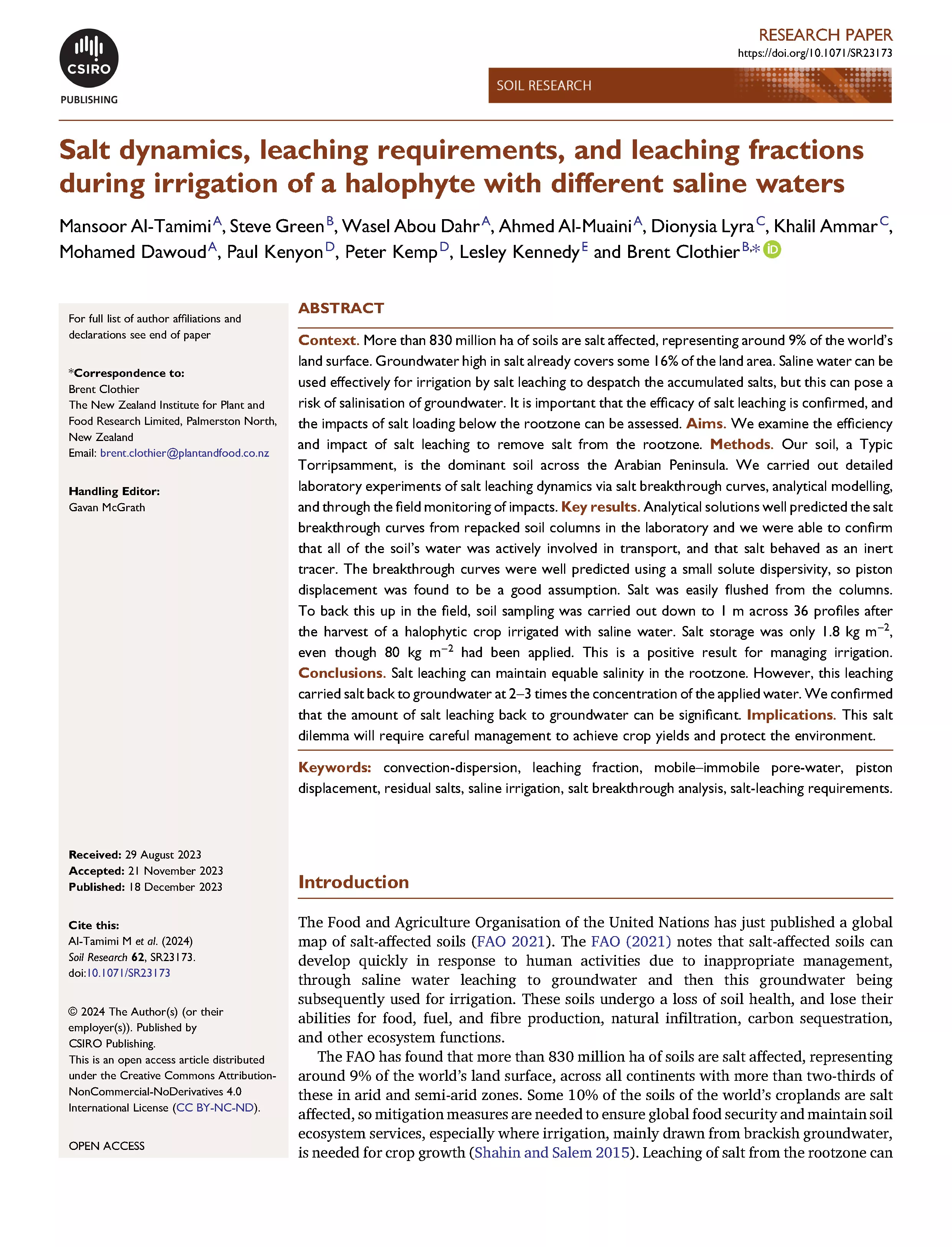Salt dynamics, leaching requirements, and leaching fractions during irrigation of a halophyte with different saline waters
Context
More than 830 million ha of soils are salt affected, representing around 9% of the world’s land surface. Groundwater high in salt already covers some 16% of the land area. Saline water can be used effectively for irrigation by salt leaching to despatch the accumulated salts, but this can pose a risk of salinisation of groundwater. It is important that the efficacy of salt leaching is confirmed, and the impacts of salt loading below the rootzone can be assessed.
Aims
We examine the efficiency and impact of salt leaching to remove salt from the rootzone.
Methods
Our soil, a Typic Torripsamment, is the dominant soil across the Arabian Peninsula. We carried out detailed laboratory experiments of salt leaching dynamics via salt breakthrough curves, analytical modelling, and through the field monitoring of impacts.
Key results
Analytical solutions well predicted the salt breakthrough curves from repacked soil columns in the laboratory and we were able to confirm that all of the soil’s water was actively involved in transport, and that salt behaved as an inert tracer. The breakthrough curves were well predicted using a small solute dispersivity, so piston displacement was found to be a good assumption. Salt was easily flushed from the columns. To back this up in the field, soil sampling was carried out down to 1 m across 36 profiles after the harvest of a halophytic crop irrigated with saline water. Salt storage was only 1.8 kg m−2, even though 80 kg m−2 had been applied. This is a positive result for managing irrigation.
Conclusions
Salt leaching can maintain equable salinity in the rootzone. However, this leaching carried salt back to groundwater at 2–3 times the concentration of the applied water. We confirmed that the amount of salt leaching back to groundwater can be significant.
Implications
This salt dilemma will require careful management to achieve crop yields and protect the environment.
